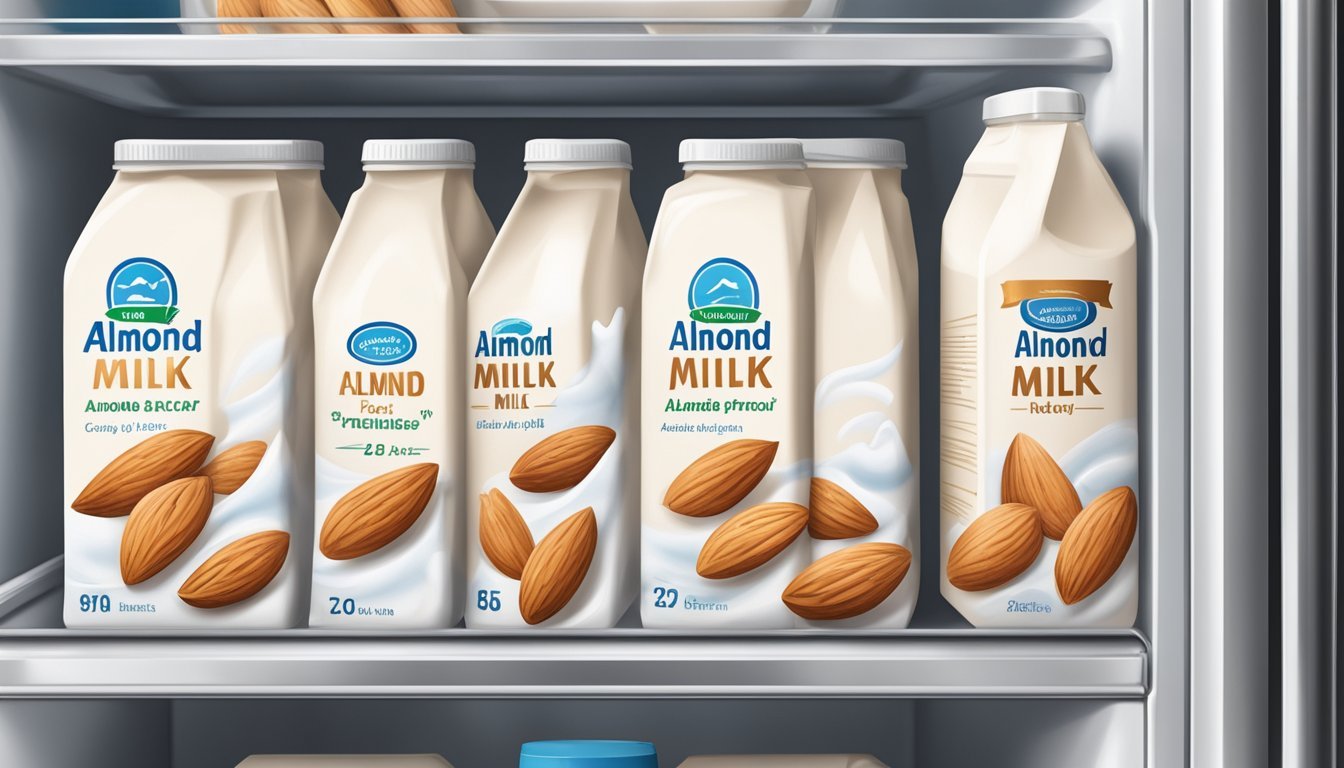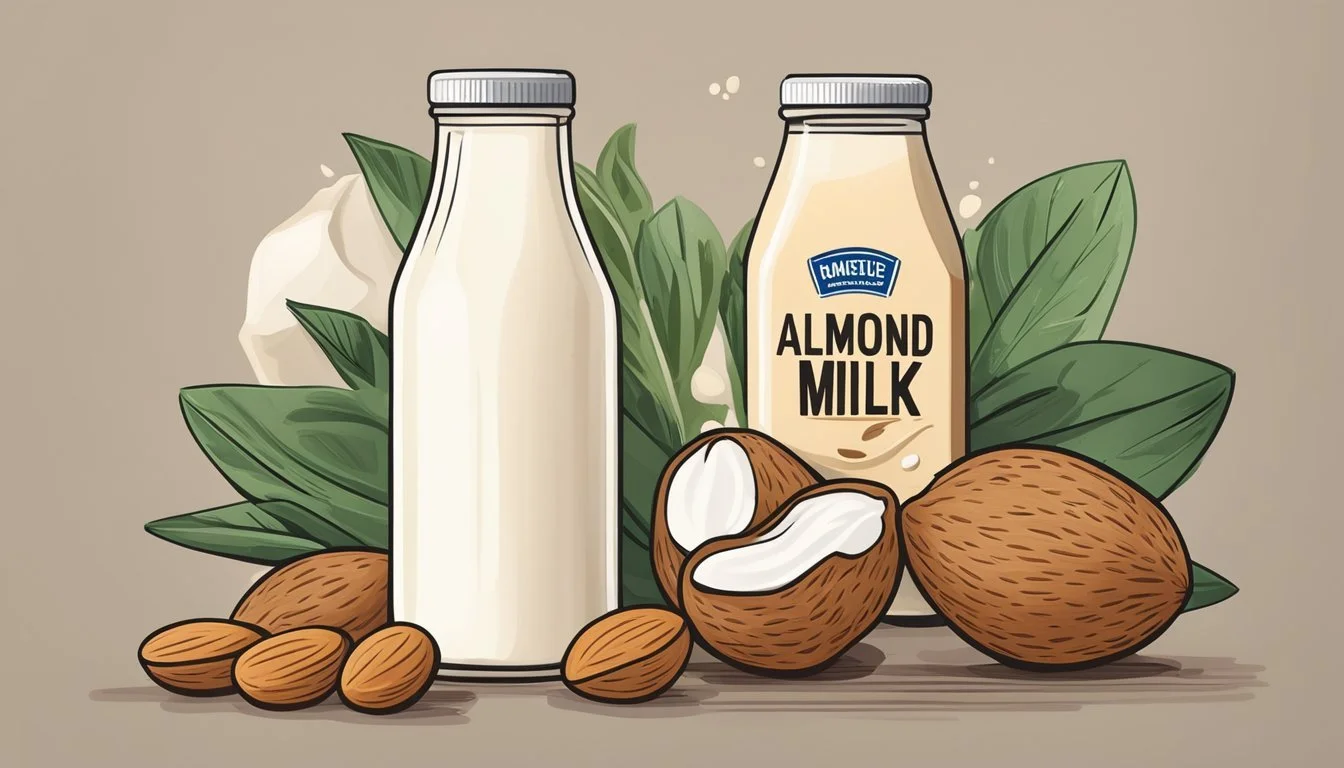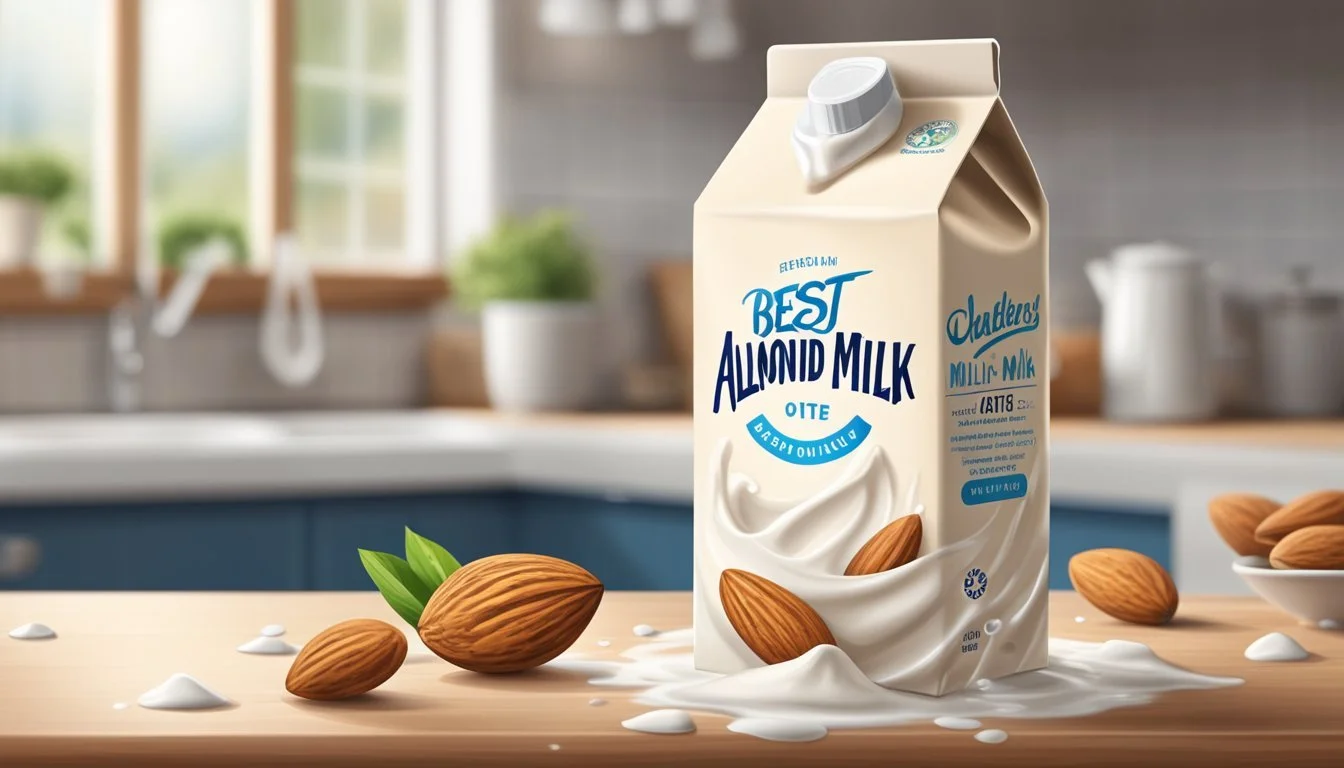How Long Does Almond Milk Last?
Shelf Life and Storage Tips
Almond milk has become a staple in many households due to its shelf stability and dietary versatility, appealing to those seeking dairy alternatives or plant-based options. Understanding the shelf life of almond milk is important for consumers to ensure they are enjoying the product at its best quality and maintaining safety standards. Generally, unopened shelf-stable almond milk can last between 12 to 24 months when stored in a cool, dry place. Once opened and refrigerated, the milk typically remains good for up to 10 days, although this can vary depending on the brand, storage conditions, and whether the product is homemade or commercially produced.
Determining the longevity of almond milk once opened requires attention to storage methods and awareness of product labels. It is recommended to keep the milk refrigerated and tightly sealed to maximize its freshness. While the best-by dates provided by manufacturers serve as useful guidelines, they do not necessarily dictate the exact point at which the milk spoils. Observing changes in color, smell, and texture can help in assessing whether the almond milk is still suitable for consumption.
Consumers also need to distinguish between shelf-stable and refrigerated forms of almond milk, as they each have different preservatives and processing methods that affect their shelf life. Shelf-stable varieties are treated with ultra-high temperature (UHT) pasteurization, allowing them to remain unrefrigerated until opened, while refrigerated almond milk, typically pasteurized at lower temperatures, should be stored in the refrigerator at all times and consumed by the use-by date indicated on the package.
Almond Milk Basics
Almond milk has become a staple in many households as a dairy-free alternative to cow's milk. It's known for its light texture and nutty flavor.
Defining Almond Milk
Almond milk is a plant-based beverage made from ground almonds and water. It typically undergoes a process of blending and straining to remove solids. The resulting liquid is then fortified with vitamins and minerals like calcium and vitamin D to enhance its nutritional profile. Unlike dairy milk, which is an animal product, almond milk is lactose-free and vegan-friendly.
Comparison with Dairy and Other Plant-Based Milks
Almond milk is distinct from dairy milk in several ways, the most significant being its plant-based origin and lower protein content.
Milk Type Origin Protein Content Lactose Fat Content Almond Milk Plant (Almond) Low None Low Dairy Milk Animal (Cow) High Present Variable Oat Milk (how long does oat milk last?) Plant (Oat) Moderate None Low to Moderate Coconut Milk Plant (Coconut) Low None High
In comparison to other plant-based milks, such as oat milk and coconut milk, almond milk tends to have fewer calories and a more subtle flavor. Oat milk is creamier and has a higher carbohydrate content, while coconut milk is richer in saturated fats and has a distinctive taste. Each type of milk offers unique benefits and flavor profiles, catering to diverse dietary preferences and needs.
Shelf Life and Quality Indicators
The longevity of almond milk and the signs of spoilage are crucial for consumers to ensure they're consuming a safe and quality product. The shelf life of almond milk can vary significantly between unopened shelf-stable varieties and those that require refrigeration upon opening.
Shelf-Stable vs Refrigerated Almond Milk
Shelf-stable almond milk typically has a longer shelf life due to the pasteurization process it undergoes and the aseptic packaging that prevents contamination. When unopened, it can last for one to two months past its printed date when stored in a cool, dry place. Once opened, it should be kept refrigerated and ideally used within 7-10 days.
Refrigerated almond milk, on the other hand, should always be stored at cold temperatures and usually comes with a shorter "use-by" date. It should be consumed within 7-10 days after opening, as its exposure to light and temperature changes can accelerate spoilage.
Spotting Spoilage: Odor, Color, Texture
Almond milk that has gone bad will exhibit clear changes in odor, color, and texture.
Odor: A rancid or sour smell is a strong indicator that almond milk should not be consumed.
Color: Any discoloration or development of a yellow hue suggests spoilage.
Texture: Almond milk should be smooth. If it appears chunky, thickened, or separates into layers even after shaking, bacteria or mold growth may have occurred.
If almond milk exhibits any of these signs of spoilage, it should be discarded to avoid the risk of foodborne illness. Consumers are encouraged to trust their senses and err on the side of caution.
Storage Guidelines
To maintain the quality and safety of almond milk, appropriate storage is crucial. This ensures that one can enjoy the milk until its estimated shelf life without compromising its taste or nutritional value.
Optimal Storage Conditions
Unopened almond milk should be stored in a cool, dry pantry away from direct sunlight and heat sources. Once opened, it requires refrigeration. The refrigerator should maintain a consistent temperature, as this is vital to preserving the milk's freshness and extending its usability. In the fridge, an opened carton of almond milk can generally last up to 10 days, but one should always check the product's specific storage recommendations.
Pantry (unopened):
Temperature: Room temperature (ideally between 50°F and 70°F)
Light: Avoid direct sunlight
Storage: Upright position, dry area
Refrigerator (opened):
Temperature: Consistently cold, around 35°F to 40°F
Position: Avoid door shelves where temperature varies
Effects of Temperature on Freshness
Temperature fluctuations can significantly affect both the freshness and consistency of almond milk. At room temperature, an unopened shelf-stable container can last until the printed expiration date. However, once opened and exposed to temperatures above refrigeration levels, almond milk can spoil quickly. The separation of components or a sour smell indicates that the milk should not be consumed. Keeping almond milk refrigerated after opening is essential to prevent bacterial growth and maintain its quality.
Room Temperature: Only for unopened, shelf-stable almond milk until the expiration date
Refrigerated: Opened almond milk, consumed within 7 to 10 days to ensure freshness
Safety and Consumption
When it comes to almond milk, safety and quality are determined by proper storage and adherence to shelf life guidelines. Consuming almond milk after it has expired or if it shows signs of spoilage can lead to health complications.
Consuming Expired Almond Milk
Almond milk carries a "best-by" date, which indicates the period during which it is considered to maintain its optimal quality when unopened. Generally, the unopened shelf life is one to two months, but once opened, it should be consumed within 7 to 10 days when kept refrigerated. It is not recommended by food safety experts, including the USDA, to consume almond milk past its expiration date, especially if the product has been stored incorrectly.
Health Implications of Spoiled Milk
Spoiled almond milk may exhibit changes in smell, taste, and texture, such as a sour odor or clumping, suggesting bacterial growth. It's important to recognize these signs as consuming spoiled almond milk can result in food poisoning, with symptoms such as vomiting and diarrhea. The health implications should not be underestimated; therefore, it is crucial to discard any almond milk that appears to have gone bad.
Extending Shelf Life
Key factors in extending the shelf life of almond milk involve proper storage in appropriate containers and understanding the effects of freezing.
Proper Container and Packaging
Storing almond milk in its original container, especially if it utilizes aseptic packaging such as Tetra Pak, is essential. These containers are designed to keep out light and air, both of which can degrade the product quicker. Once opened, pouring the almond milk into an air-tight container can help keep it fresh for up to seven days in the refrigerator. It is important to ensure that the seal is secure to minimize exposure to air.
Do: Use the original aseptic packaging for unopened almond milk.
Don't: Leave almond milk in a container that cannot be sealed after opening.
Freezing Almond Milk
Almond milk can be frozen to extend its shelf life. Freezing should be done before the 'use by' date to maintain its quality. Upon freezing, the texture may change, making it potentially less desirable for drinking, but still functional for uses like cooking.
How to Freeze:
Portion almond milk into ice cube trays for small, convenient amounts.
Store frozen cubes in a freezer-safe, air-tight container or bag.
Thaw in the refrigerator before use.
Note: Freeze almond milk only if the intention is to use it in cooking or baking, as thawed almond milk may separate and have a grainy texture.
Homemade Almond Milk
Creating almond milk at home allows individuals to control ingredient quality and nutritional value. Ensuring proper preparation and storage is crucial for maintaining its freshness and extending shelf life.
Preparation and Storage
When making almond milk, sanitation is paramount. Individuals should start with high-quality almonds and use filtered water. Sterilizing equipment and containers prevents contamination and can be done by boiling them in water. Once prepared, homemade almond milk should be stored in an airtight container in the refrigerator. The optimal shelf life of this fresh almond milk is 3-5 days.
Sterilization: Boil equipment before use.
Refrigeration: Store at 40°F or below.
Container: Airtight and clean.
Freshness and Nutritional Value
Homemade almond milk lacks the additives found in commercial variants, meaning it's often fresher and more nutritious. Fresh almond milk is rich in vitamins, minerals, and may contain higher quantities of almonds compared to store-bought versions, resulting in a creamier texture and a more nutrient-dense drink. However, the homemade process does not include fortification that store-bought versions might have, like additional vitamin D or calcium. The protein content in homemade almond milk is also directly tied to the almond-to-water ratio used in preparation.
Nutrient Density: Higher in homemade versions due to more almonds.
Additives: None, unless added deliberately.
Protein Content: Depends on almond ratio.
Understanding Expiration Labels
When purchasing commercial almond milk, the expiration date is crucial for determining shelf life. This section helps consumers interpret those dates and understand how long almond milk remains usable after opening.
Deciphering Dates on Commercial Almond Milk
Commercially made almond milk comes with labels indicating expiration dates to inform consumers of the product's peak quality timeframe. Expiration date refers to the point at which the manufacturer can no longer guarantee optimal taste and nutritional value. These dates can vary depending on the processing method used, such as pasteurized or ultra-pasteurized—the latter often extends shelf life.
It's important to note the difference between "best by," "sell by," and "use by" dates:
Best by: Suggests when the product is at peak quality
Sell by: More for retailers, indicating when the product should be sold or removed from shelves
Use by: The last recommended date for using the product while at peak quality
While these dates are not safety indicators, they serve as a guide for consumers to ensure the best experience when consuming almond milk.
Shelf Life After Opening
Once opened, the shelf life of almond milk is significantly reduced. Regardless of the expiration date printed on the unopened package, opened almond milk should be consumed within:
Refrigerated and pasteurized: 7 to 10 days
Refrigerated and ultra-pasteurized: Up to 10 to 14 days
It's essential for the almond milk to be stored properly, at a constant refrigeration temperature, ideally between 34°F and 40°F, to maximize its freshness after opening. If the product has an off smell, taste, or appearance, it should not be consumed to avoid potential foodborne illness.
Using Almond Milk in Recipes
When incorporating almond milk into recipes, it's important to consider its impact on the flavor and texture of dishes. Almond milk can be a versatile ingredient across various types of preparations, offering a dairy-free alternative with subtle nutty undertones.
Culinary Applications
Almond milk is a staple in plant-based cooking and can be used in a wide array of recipes. Below is a non-exhaustive list of its uses:
Beverages: It's commonly added to smoothies and coffee, providing a creamy consistency without overpowering the drink's primary flavors.
Breakfast: A popular choice for cereal or oatmeal, imparting slight sweetness and a smooth texture.
Baking: Suitable for cakes, muffins, and other baked goods, where it can act as a substitute for cow's milk.
The specific brand of almond milk can influence a recipe's outcome due to variations in sweetness, consistency, and whether it's flavored or unsweetened.
Impact on Taste and Consistency
The addition of almond milk in recipes does more than just replace dairy. It also:
Imparts a nutty taste that can complement or enhance the overall flavor profile.
May alter the consistency of a dish, as it is typically thinner than cow's milk. Thickeners might be necessary for certain recipes to achieve the desired texture.
When using almond milk, one should consider if the recipe requires adjustments in sweetener or thickening agents to maintain the intended taste and consistency. Always check for freshness, as almond milk can spoil, affecting both flavor and food safety.
Buying and Selecting Almond Milk
When purchasing almond milk, consumers have a variety of brands and product types to choose from. Selecting the right option involves considering the product's ingredients, such as water content and stabilizers, and understanding how these factors affect quality and shelf life.
Almond Milk Brands and Varieties
Almond milk comes in numerous brands, each offering different varieties that cater to specific dietary preferences and uses. Some common varieties include:
Original: Often a blend of almonds, water, and sometimes a sweetener.
Unsweetened: Lacks added sugars and is generally lower in calories.
Flavored: May include vanilla or chocolate, often containing added sugars.
Fortified: Enhanced with vitamins and minerals such as calcium and vitamin D.
Shelf-stable: Treated with high heat to extend shelf life and does not require refrigeration until opened.
Refrigerated: Found in the grocery store's refrigerated section; must be kept cold at all times.
Shopping Tips at the Grocery Store
When shopping for almond milk at the grocery store, consider the following tips to ensure a quality purchase:
Check the expiration date: Although almond milk can last beyond this date, it's crucial to start with the freshest product possible.
Inspect the packaging: Choose cartons that are intact and show no signs of damage or bloating.
Read ingredient lists: Look for minimal ingredients and avoid excess stabilizers and additives if seeking a more natural product.
Select the right type for your needs: Choose shelf-stable options for pantry storage or refrigerated varieties if immediate use is planned.
When selecting almond milk, one should consider the role of stabilizers, which can impact both shelf life and texture. Brands that use minimal stabilizers might offer a product closer to homemade almond milk, which some consumers prefer for purity and taste. However, stabilizers can improve consistency and extend shelf life, making the milk more convenient for those who do not consume it quickly.
Miscellaneous Tips and Facts
In this section, we explore the impact of different refrigeration methods on almond milk's shelf-life and what to do when almond milk separates.
Comparing Refrigeration Methods
Refrigerator placement: The location of the almond milk within the refrigerator can affect its longevity. Almond milk kept in the door of the refrigerator is more exposed to temperature fluctuations, which can reduce its shelf-life. For optimal preservation, it is best to store almond milk in the main part of the refrigerator where the temperature is more consistent.
Temperature setting: A refrigerator set to 40°F or below is ideal for prolonging the shelf-life of refrigerated carton almond milk. A consistently cold temperature minimizes bacterial growth and keeps the milk fresh for up to seven days after opening.
Understanding Almond Milk Separation
Natural separation: Almond milk often separates into solids and liquid due to its natural ingredients. This does not necessarily indicate spoilage. Simply shaking the container can recombine the contents.
Spoilage signs: If the carton is bloated or the almond milk has an off smell, clumps, or a sour taste, it has likely gone bad and should not be consumed.
Shelf-stable vs. refrigerated: Unopened shelf-stable almond milk typically lasts longer than refrigerated cartons—usually one to two months past the printed date. Once opened, both types should be consumed within seven to ten days when stored properly in the refrigerator.
Additional Considerations
When choosing almond milk, consumers often consider more than just shelf life. Factors such as environmental impact and dietary needs are pivotal in making an informed decision.
Environmental Impact of Almond Milk
The production of almond milk can have a significant environmental footprint. This plant-based milk requires substantial water resources, with estimates suggesting that it takes about 15 gallons of water to produce a single handful of almonds. Nevertheless, when compared to dairy milk, almond milk often uses less water overall and emits fewer greenhouse gases, making it a more environmentally friendly option for individuals concerned about their ecological impact.
Choosing Almond Milk for Dietary Preferences
Almond milk serves as a popular alternative for those following vegan or specific plant-based diets. It is free from animal by-products and lactose, making it suitable for vegans, the lactose intolerant, and others with dietary restrictions. When selecting almond milk, customers should inspect the product for signs of spoilage, such as lumpy or clumpy consistency, which indicates that the milk should no longer be consumed. They should ensure the almond milk aligns with their dietary preferences by checking for added sugars, emulsifiers, and enrichments such as calcium or vitamins.







